Personal protective equipment is essential on every construction site. For work at heights, PPE against falls from height is also required. Both protect what matters most: the people working on the job.
Here you will find all the important basics – clearly sorted and with practical relevance: terms, legal situation, use in work platforms, selection, testing, costs, fall zone and rescue plan.
Overview of terms
PPE is the general term for all personal protective equipment. PPE against falls from height (PPEgA) is a specific type of PPEgA – it comes into play when there is a risk of falling. It is important to distinguish between the different systems.
| Expression | Meaning | Examples / Standards |
|---|---|---|
| PSA | General body protection | Helmet, gloves, safety shoes, goggles (PPE Regulation) |
| PSAgA | Fall protection | Full body harness (EN 361), lanyard (EN 354), shock absorber (EN 355) |
| Restraint system | Prevents reaching the edge of the fall | Safety harness (EN 358) with short lanyard |
| Collection system | Stops a free fall in a controlled manner | Full body harness (EN 361) with shock absorber (EN 355) |
Personal protective equipment against falls from height: Complete system with harness and lanyard for safe working at heights
Legal framework
The Occupational Health and Safety Act and the Industrial Safety Ordinance require that hazards be assessed, employees be instructed, and equipment be inspected. This includes all use of work platforms.
The ASR A2.1 standard prescribes protective measures for falls from a height of one meter or more. Stricter requirements apply above traffic areas or water. The DGUV regulations and manufacturer's specifications make it clear: Personal protective equipment against falls from height (PPEgA) is mandatory on telescopic, articulated, and truck-mounted platforms due to the potential for oscillation (the " whiplash effect "). For scissor lifts, the guardrail is usually sufficient, provided it is complete and undamaged.
Personal protective equipment against falls from height (PPEgA) is mandatory when working on platforms
Whether personal protective equipment against falls from a height (PPEgA) is required depends on the type of stage and the operational situation. The following overview will help with the assessment.
| Stage type / Use | Is PPE needed? | Notice |
|---|---|---|
| Scissor lift with intact railing | Generally, no. | Collective protection is sufficient; exceptions may be made based on a risk assessment. |
| Telescopic, articulated or truck-mounted platform | Yes | Whiplash effect can lead to ejection. |
| Deployment over water, traffic or machinery | Yes | Increased risk regardless of altitude |
| Working near an unsecured edge > 1 m | Yes, or railings | Fall protection required |
Duties and responsibilities
Safety is teamwork. Employers, operators, and experts each have their own responsibilities. Only when all three sides function correctly does the system remain reliable.
| role | Responsibility |
|---|---|
| Employer | Risk assessment, provision of equipment, instruction, annual inspection by qualified personnel, documentation and cost coverage |
| operator | Perform a visual inspection before use, use equipment as intended, follow instructions, and report defects immediately. |
| Expert | Annual inspection of each component, documentation of the findings, and shutdown of faulty equipment. |
Components and guide prices
A complete PPE against falls from height consists of several tested components. The following table provides an overview of typical components and costs.
| component | function | standard | Price range |
|---|---|---|---|
| Safety harness | Load distribution in the case | EN 361 | €90 – €200 |
| connecting devices | Connects strap and anchor point | EN 354 | €20-40 |
| Band energy absorber | Limits the impact force | EN 355 | 15 – 30 € |
| Fall arrest device | Automatic belt or rope management | EN 353 / EN 360 | €60 – €120 |
| Anchor point / rail | Fixation in the basket or supporting structure | EN 795 | 50 – 100 € |
| Complete set | Belt + connection + damper | – | ≈ 150 € |
Testing, instruction and documentation
A visual inspection is mandatory before each use. At least once a year, each component of personal protective equipment against falls from a height (PPEgA) must be professionally inspected and documented. If the inspection sticker is missing, it must not be used.
| Performance | interval | Cost | Notice |
|---|---|---|---|
| Expert inspection of fall arrest harness | yearly | €7 – €26 | Observe manufacturer's instructions |
| Testing of lanyards / shock absorbers | yearly | 10 – 15 € | In case of damage, lock the station immediately. |
| PSAgA training (2 days) | Before first use, and annually thereafter, instruction | ≈ 580 € | Practical exercises with rescue scenarios |
Test your PSAgA knowledge directly
Want to test your knowledge of personal protective equipment against falls from height (PPEgA) ? Our free online test will help you find out if you know the most important safety rules, regulations, and use cases.
Selection and practical application
The right choice determines comfort and safety. Always use a restraint system whenever possible – only use fall arrest systems if restraint is technically impossible. Anchor points in the basket must be provided and marked accordingly.
Lanyards should be as short as possible, but as long as necessary. In telescopic platforms, a fall arrest device with a short lanyard is ideal to minimize the whiplash effect.
Correctly assessing the fall distance
Sufficient space must be left under the work platform in case the fall arrest system is triggered. The following simple rule of thumb helps with planning:
| parameter | Typical value | remark |
|---|---|---|
| Fastener length | 1.5 m | including hooks |
| shock absorber extension | 1.75 m | limited catch force |
| Belt construction / Body length | 1.5 m | Sum of stretch and body |
| safety distance | 1.0 m | always plan for it |
| Required fall space | ≈ 5.75 m | Example calculation |
Using a fall arrest device significantly reduces the fall distance. The exact values can be found in the manufacturer's instructions.
Rescue plan – obligation and practice
Every operation involving personal protective equipment against falls from a height (PPEgA) requires a clear rescue plan. This plan specifies who acts, how the alarm is raised, and what equipment is available. The goal is a rescue within 15 minutes to prevent suspension trauma.
Example: 25 m telescopic platform
- Maximum rescue time: 15 minutes
- Rescue equipment: Abseiling device + stretcher (within a 50 m radius)
-
Alert:
- Operator reports → Employer (2 min)
- Employer alerts rescue services (3 min)
- Rescue arrives (8–10 min)
- Rescue (5–7 min)
Result: Total duration 18–22 minutes – too long. The solution: Regularly practice internal rescue procedures and keep equipment readily available.
Practice checklists
Before deployment
- Is the risk assessment up-to-date and tailored to the specific deployment?
- System choice examined – support before fallback?
- Are anchor points present and marked?
- PSAgA complete, inspected, with valid certification?
- Are instructions and rescue plan known?
During the operation
- Connection at the designated anchor point – not at the railing.
- Keep connecting materials as short as possible.
- Doors and chains inside the basket are closed.
- Observe wind, vibrations and whiplash effect; stop work when limits are reached.
After the deployment
- Clean, dry, and inspect PPE; immediately lock any damaged parts.
- Update documentation: inspection, defects, replacement, instruction.
Typical mistakes and how to avoid them
- Incorrect anchor point: Never attach to the railing.
- Excessively long connecting elements: Increases the fall distance – shorter strap solutions are preferable.
- No rescue planned: Avoid wasting time – have your plan and equipment ready.
- Expired inspection intervals: Check sticker or report.
- Lack of training: Refresh annually, train new employees immediately.
Conclusion
Personal protective equipment against falls from height (PPEgA) is mandatory on boom and telescopic platforms. Fall arrest takes priority, fall zones must be known, and rescue operations must be planned. Those who know the rules, regularly check and practice, work safely, efficiently, and in accordance with the law.


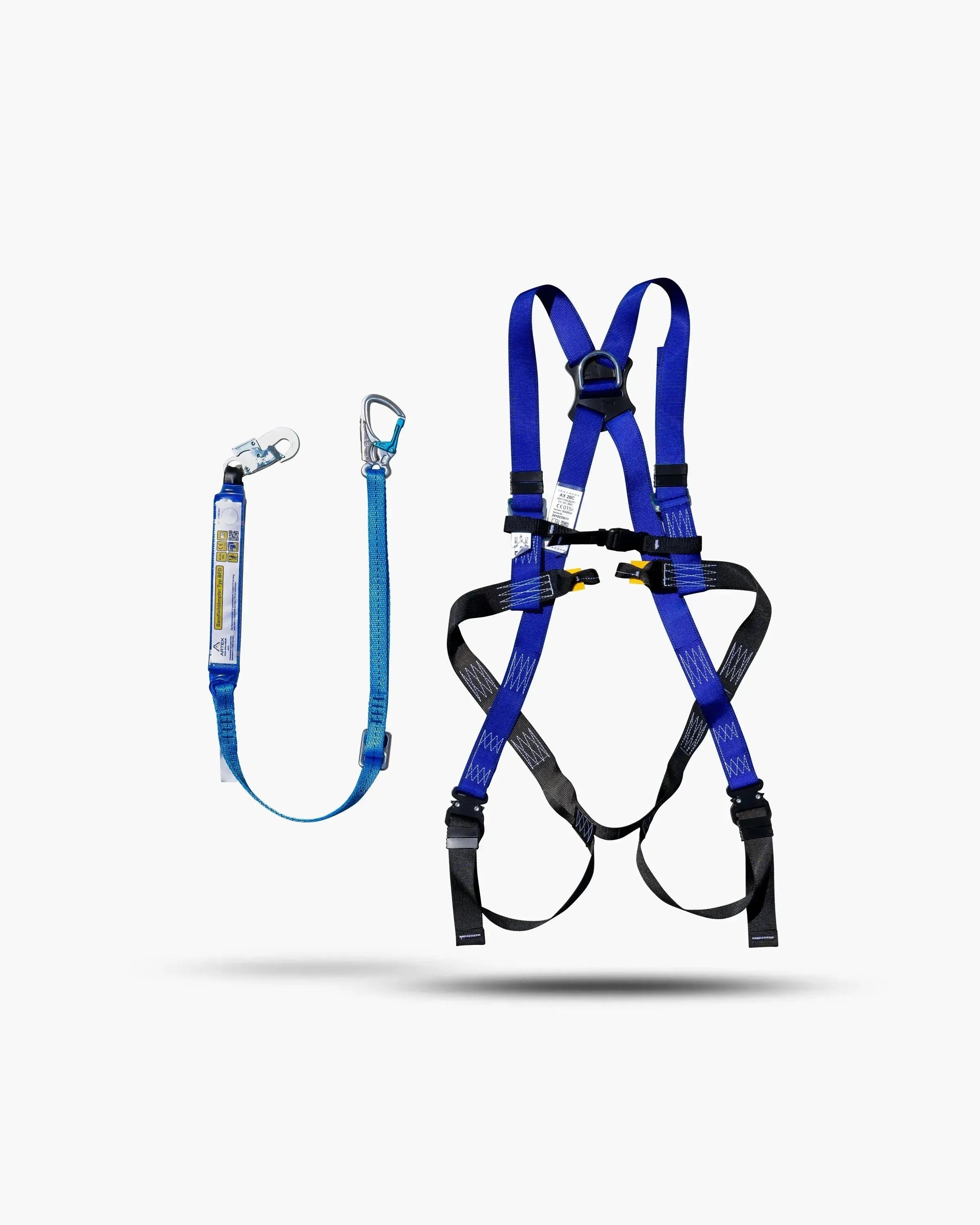




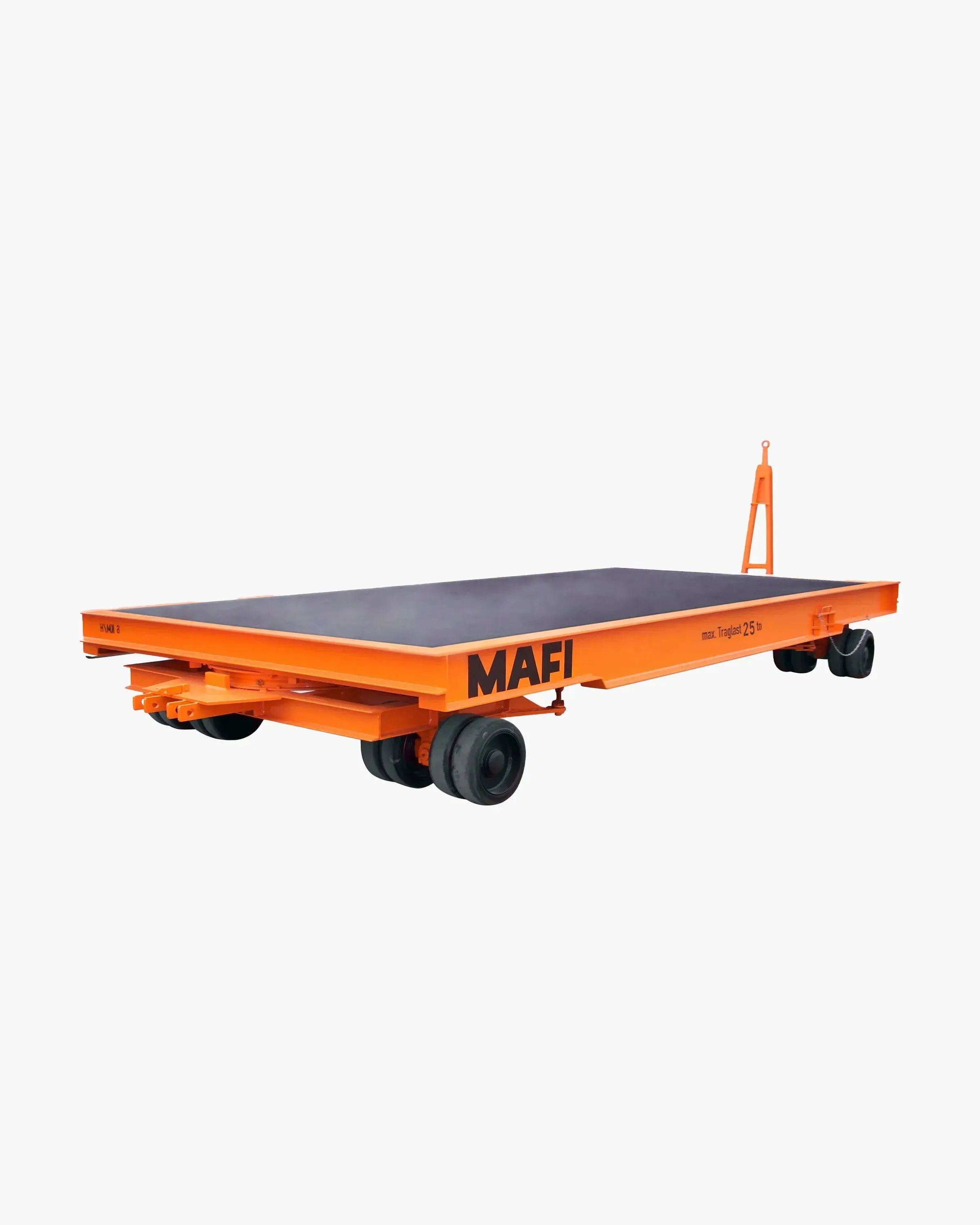
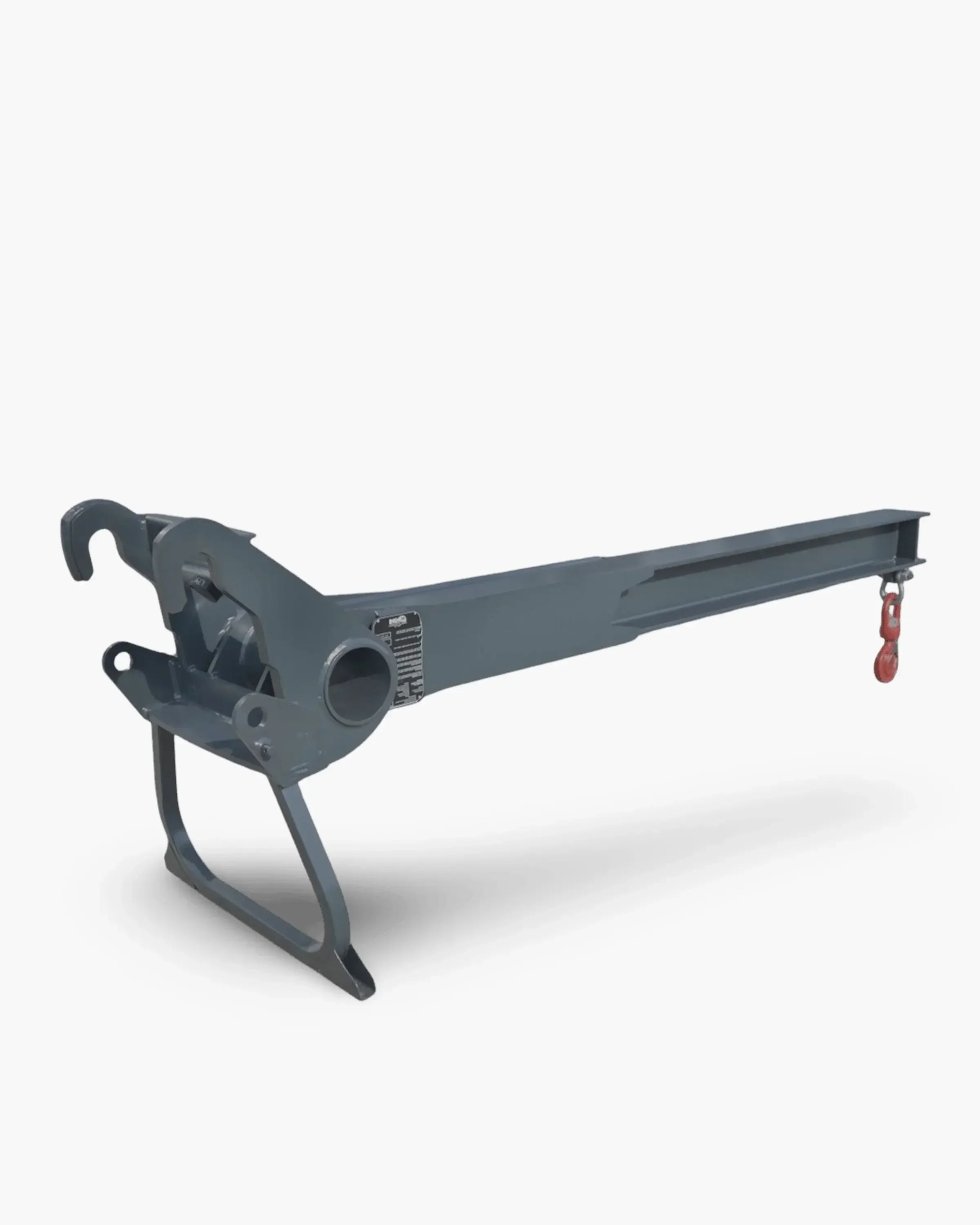
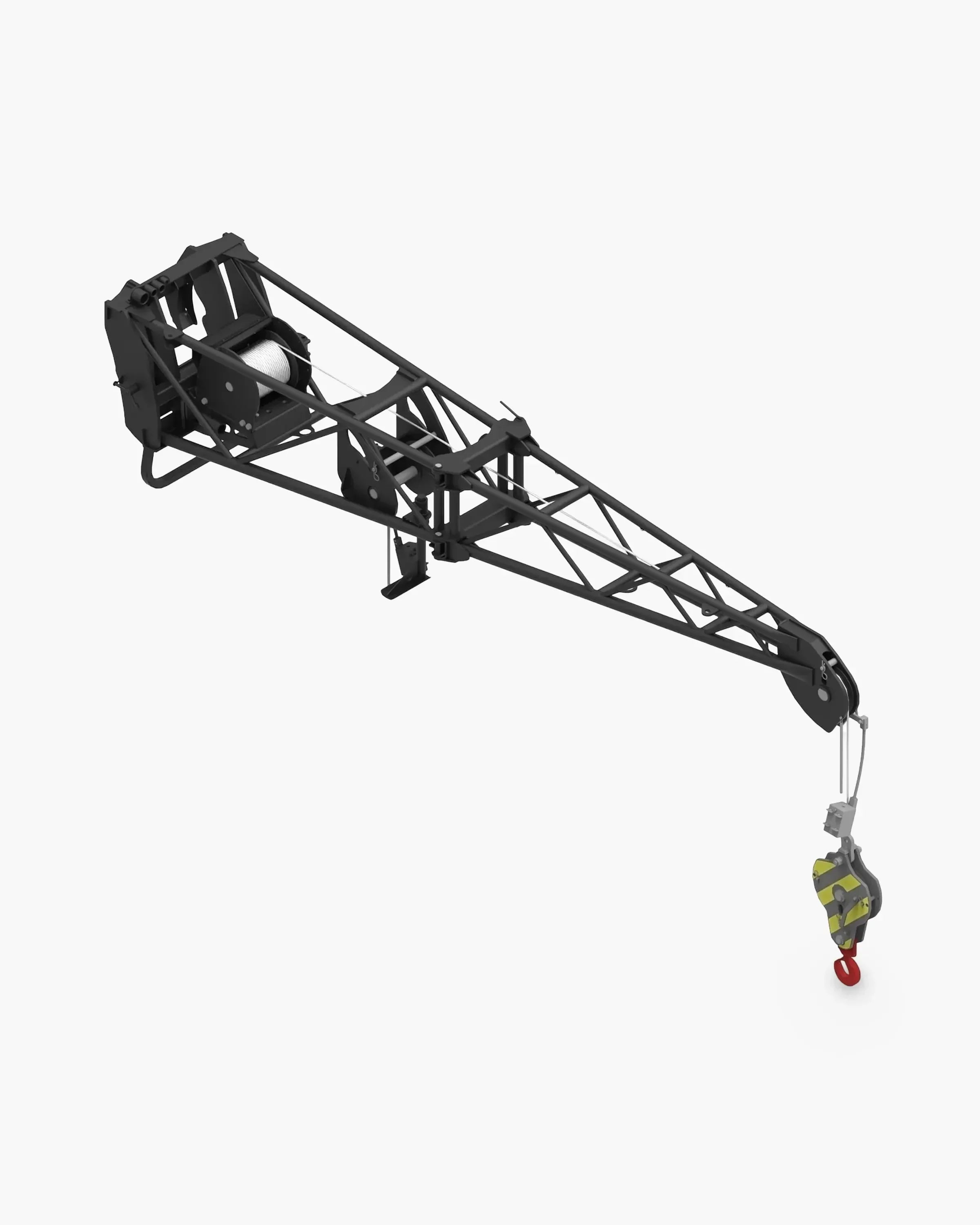
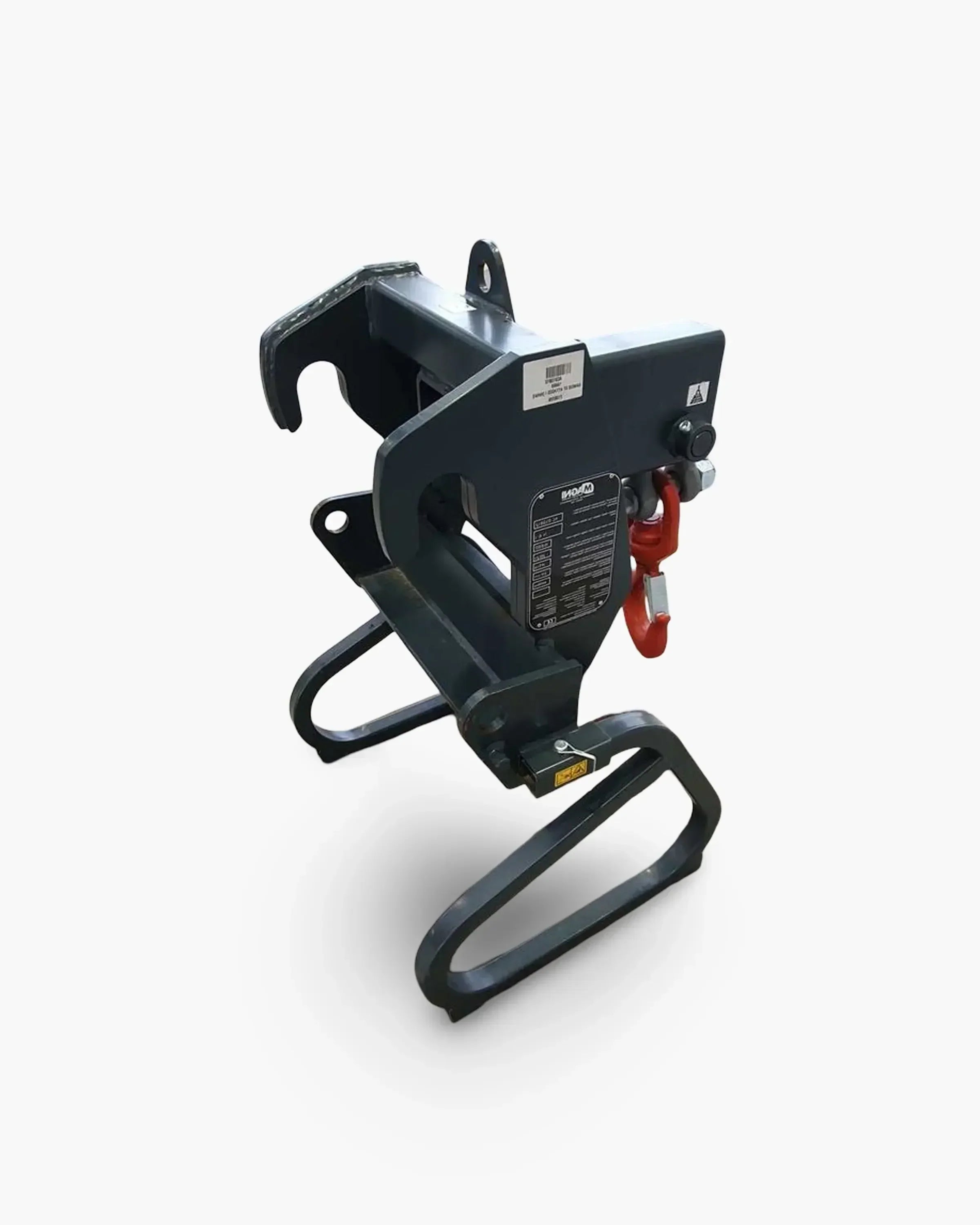

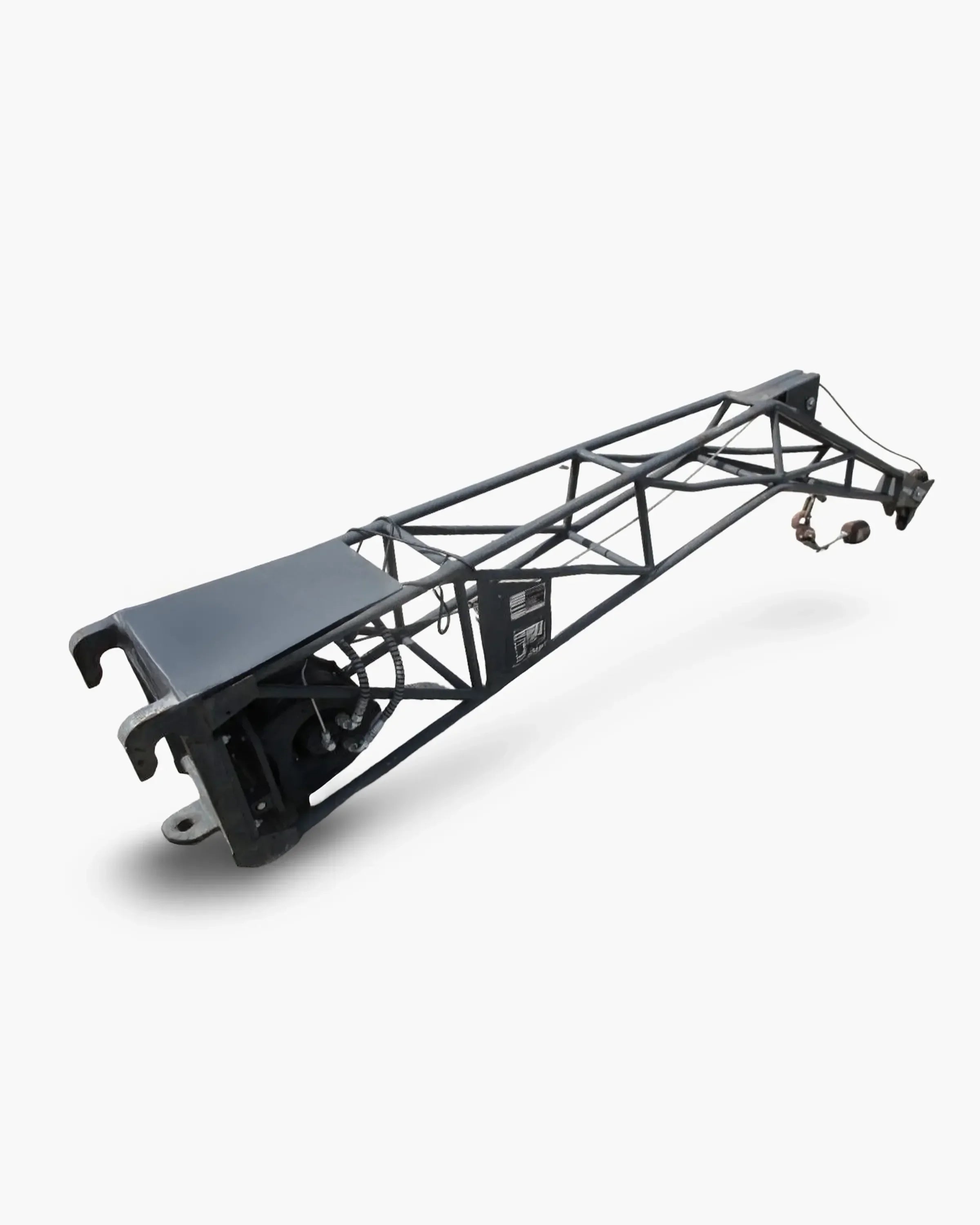
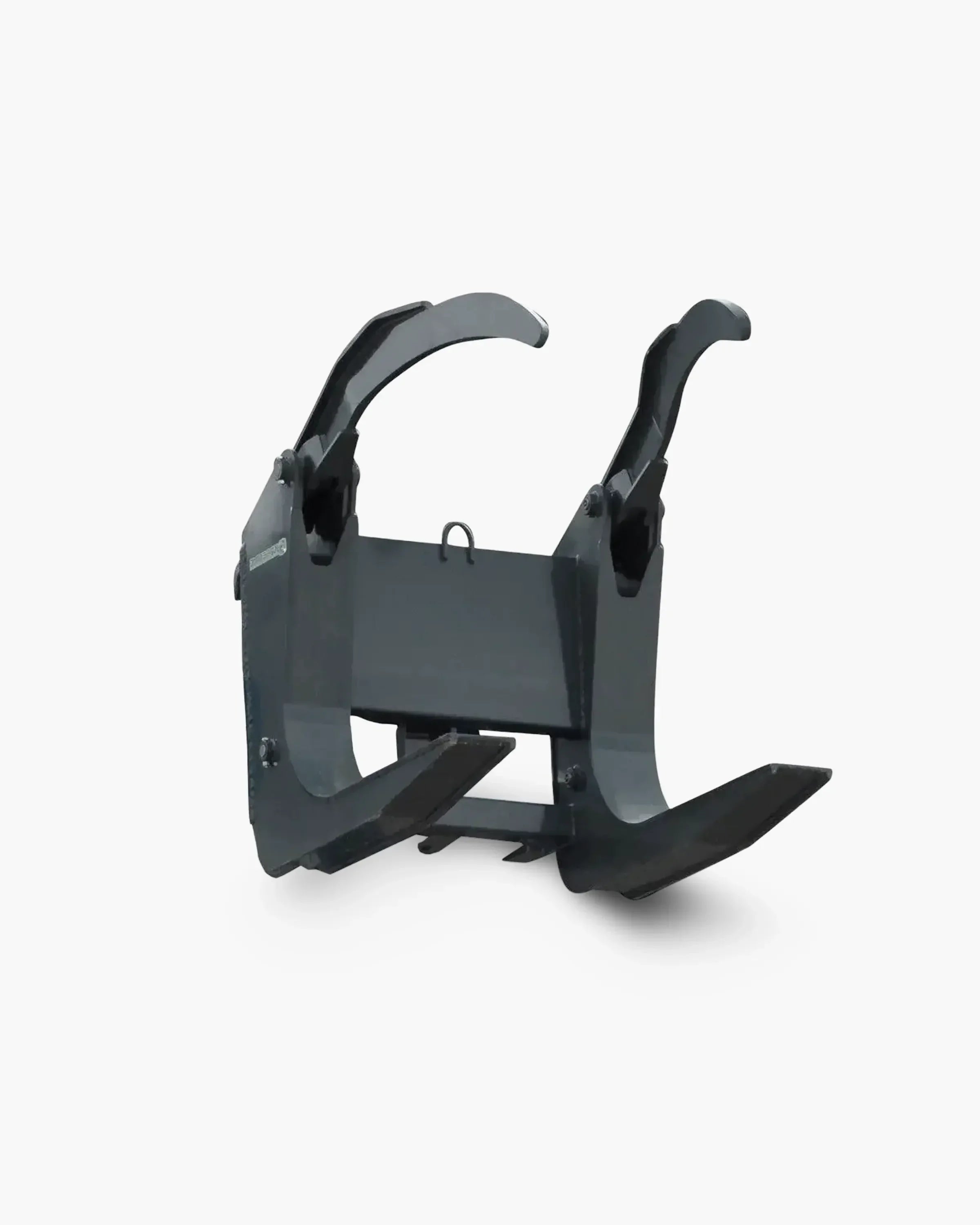
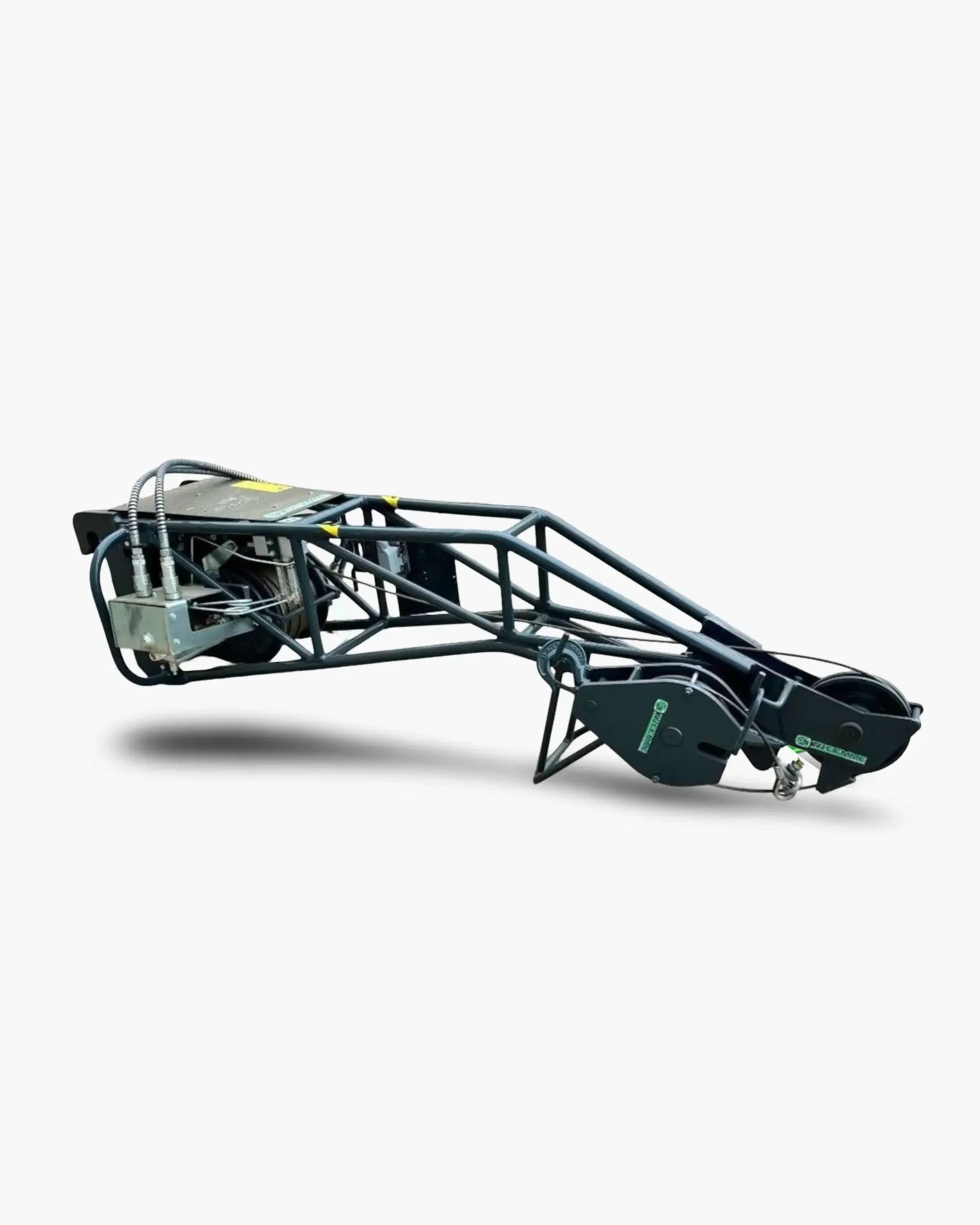

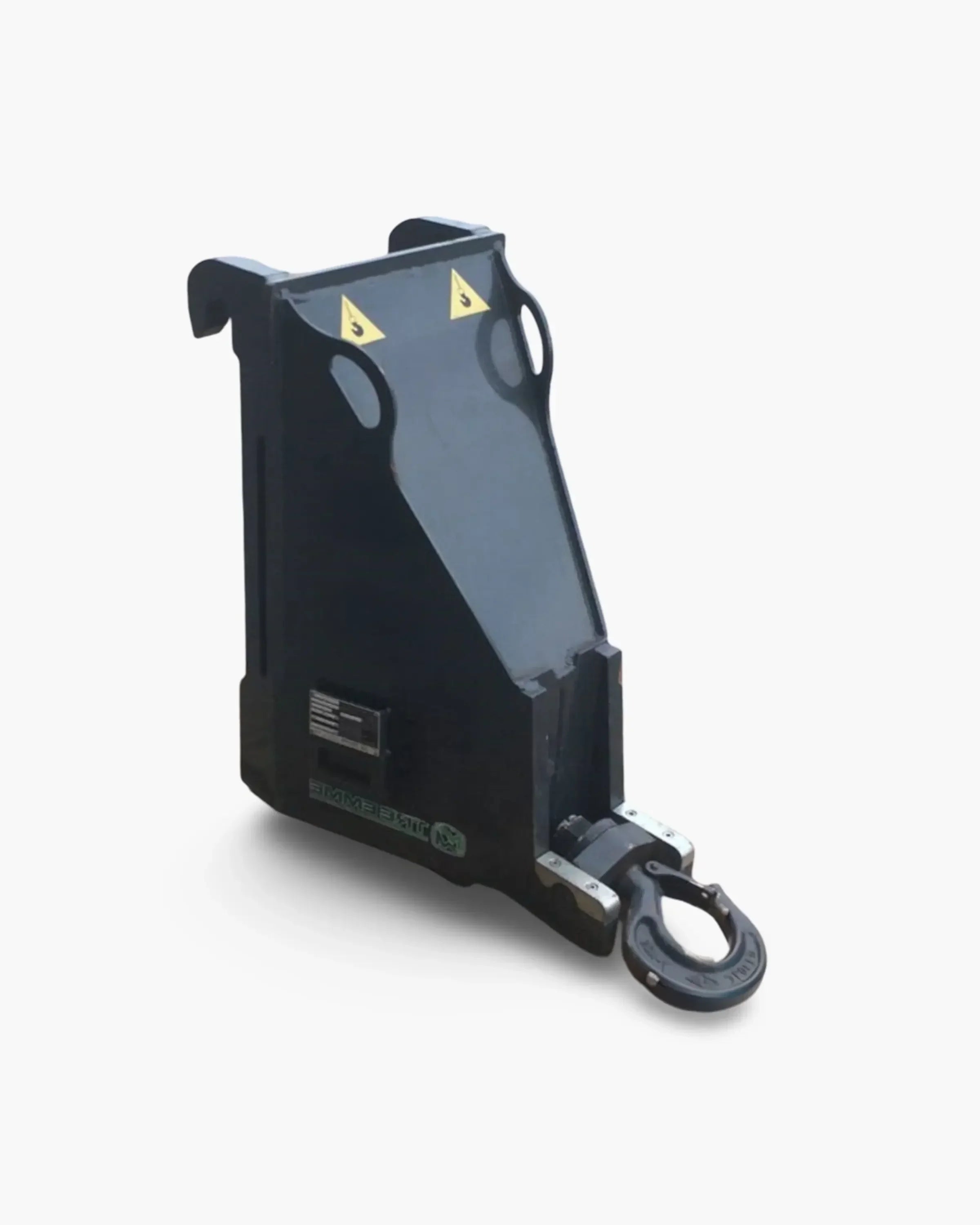
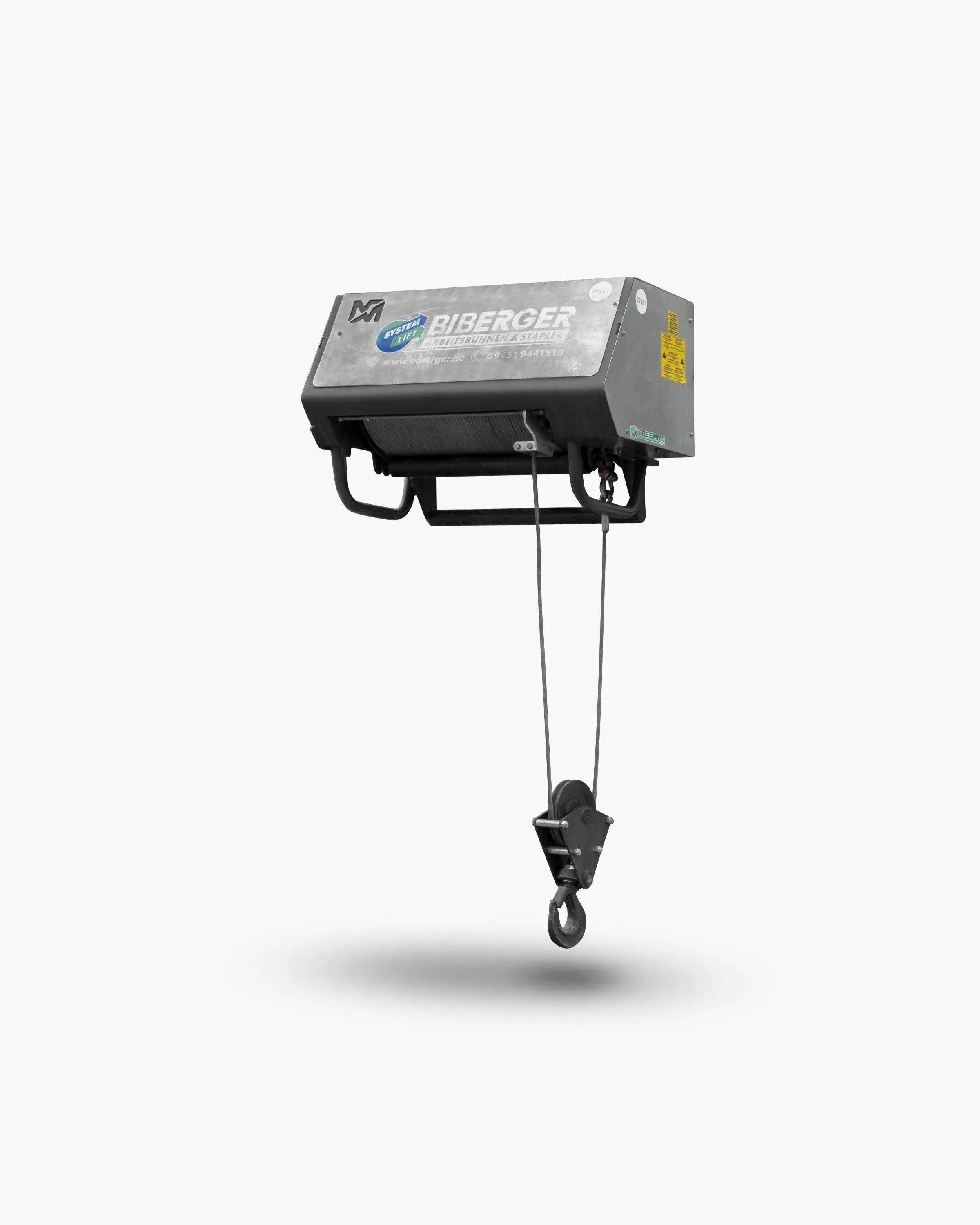
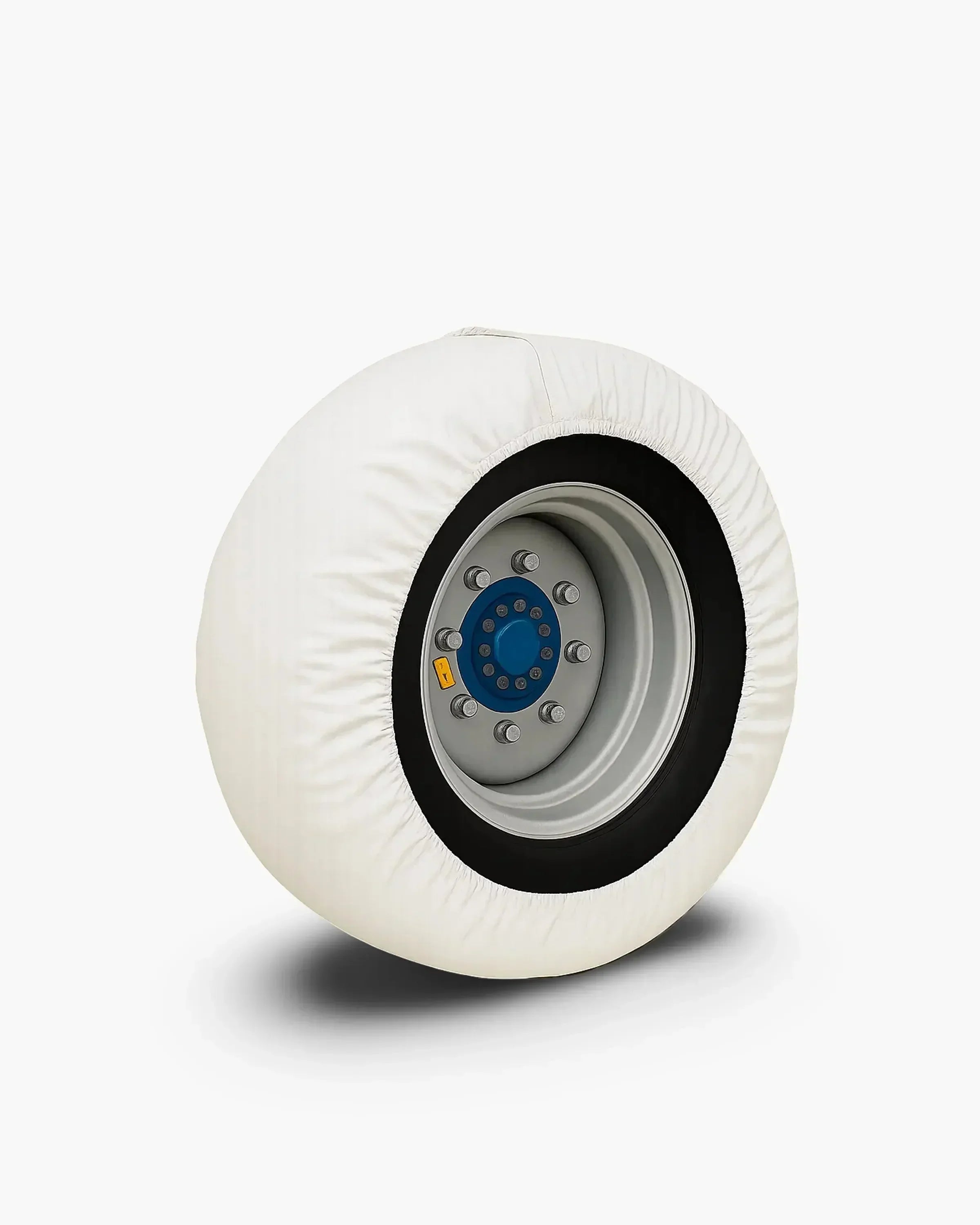





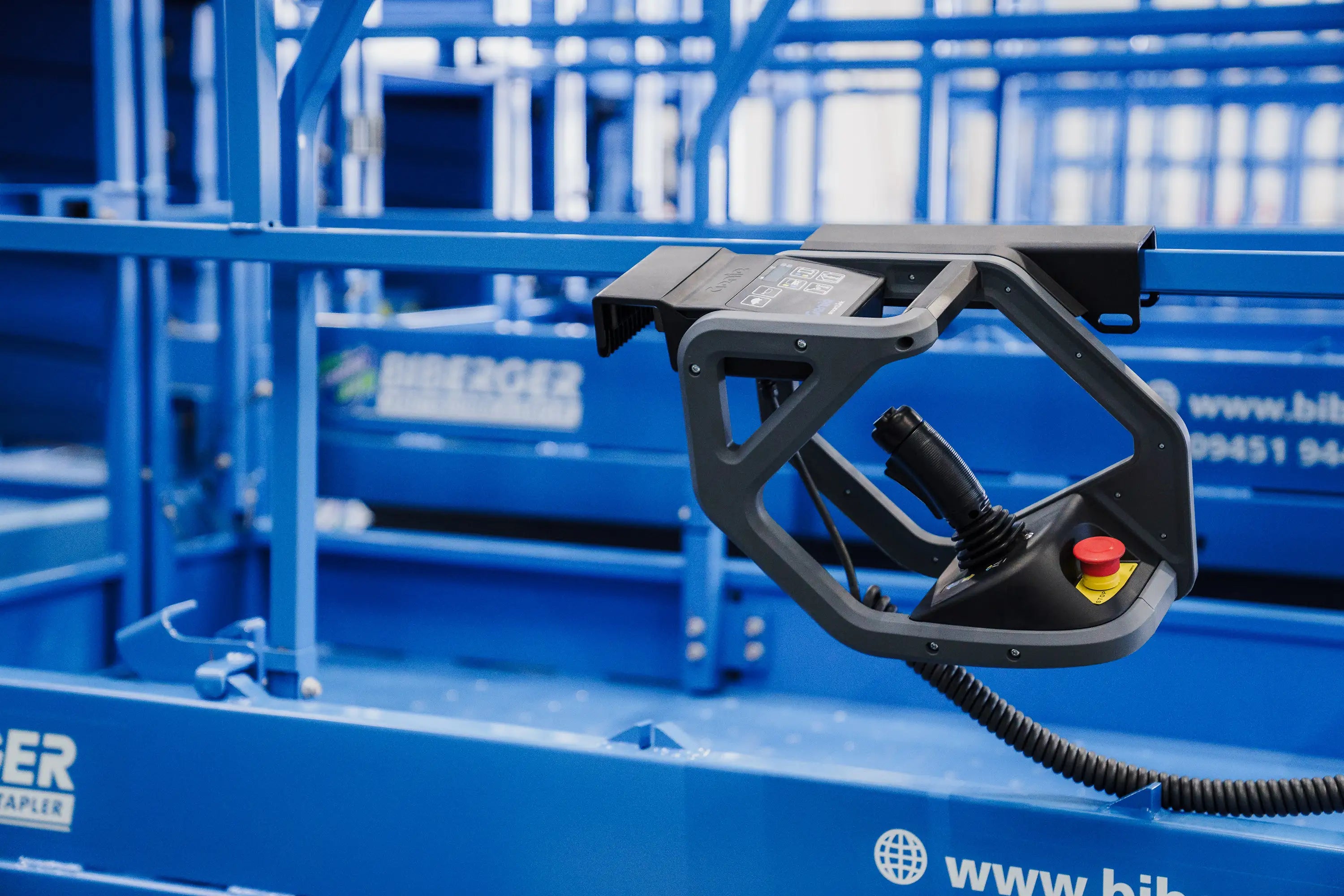
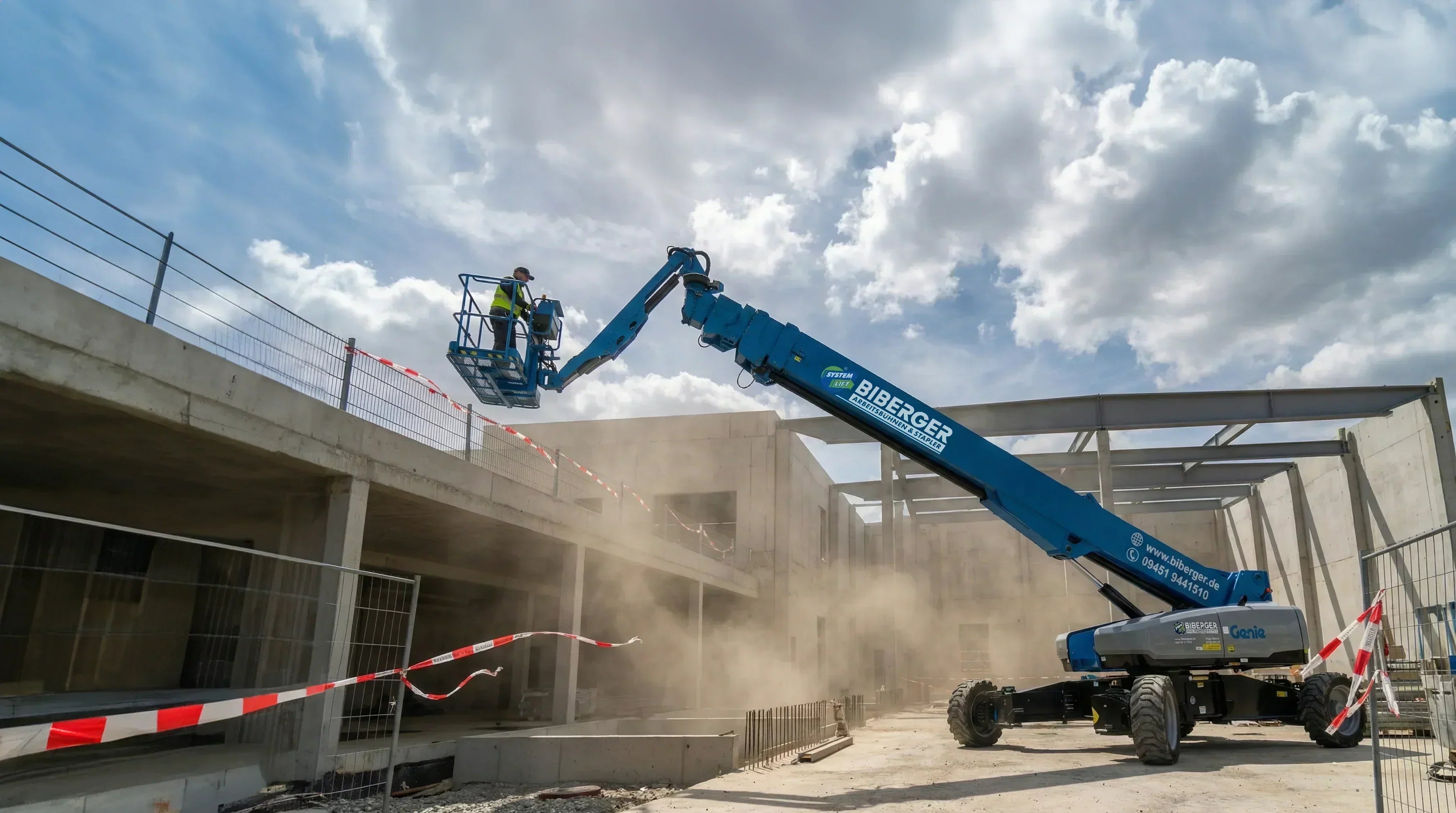

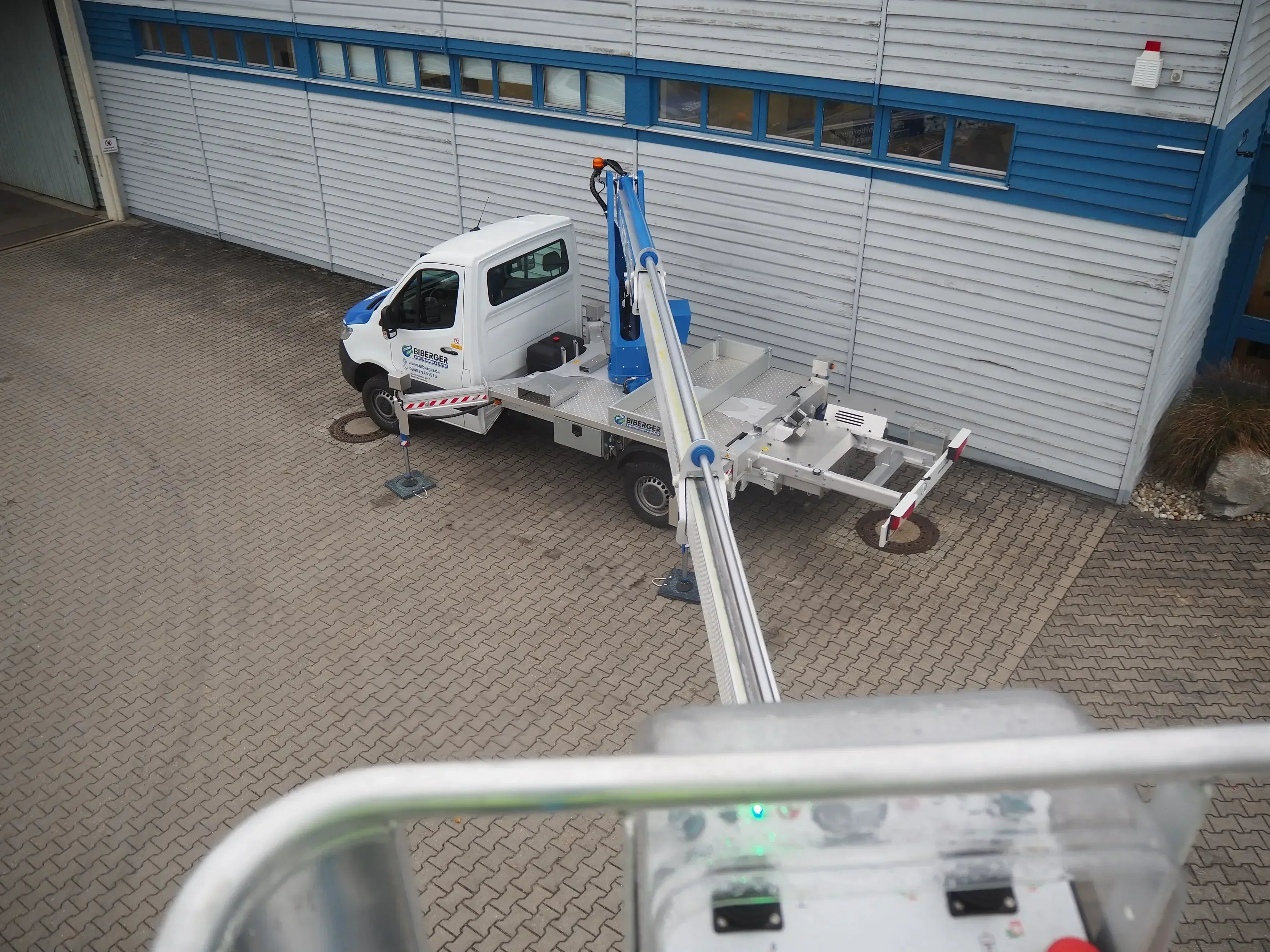
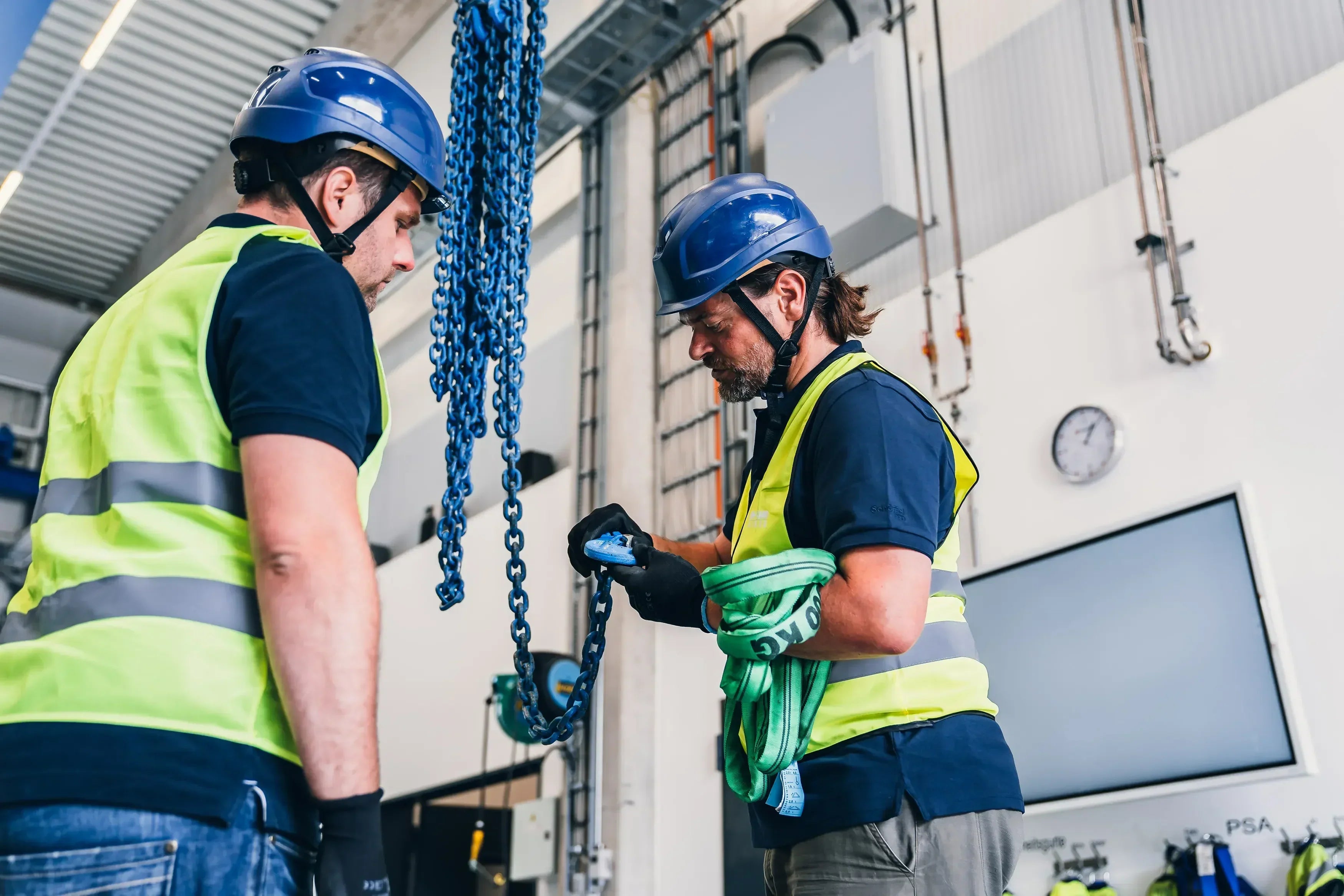
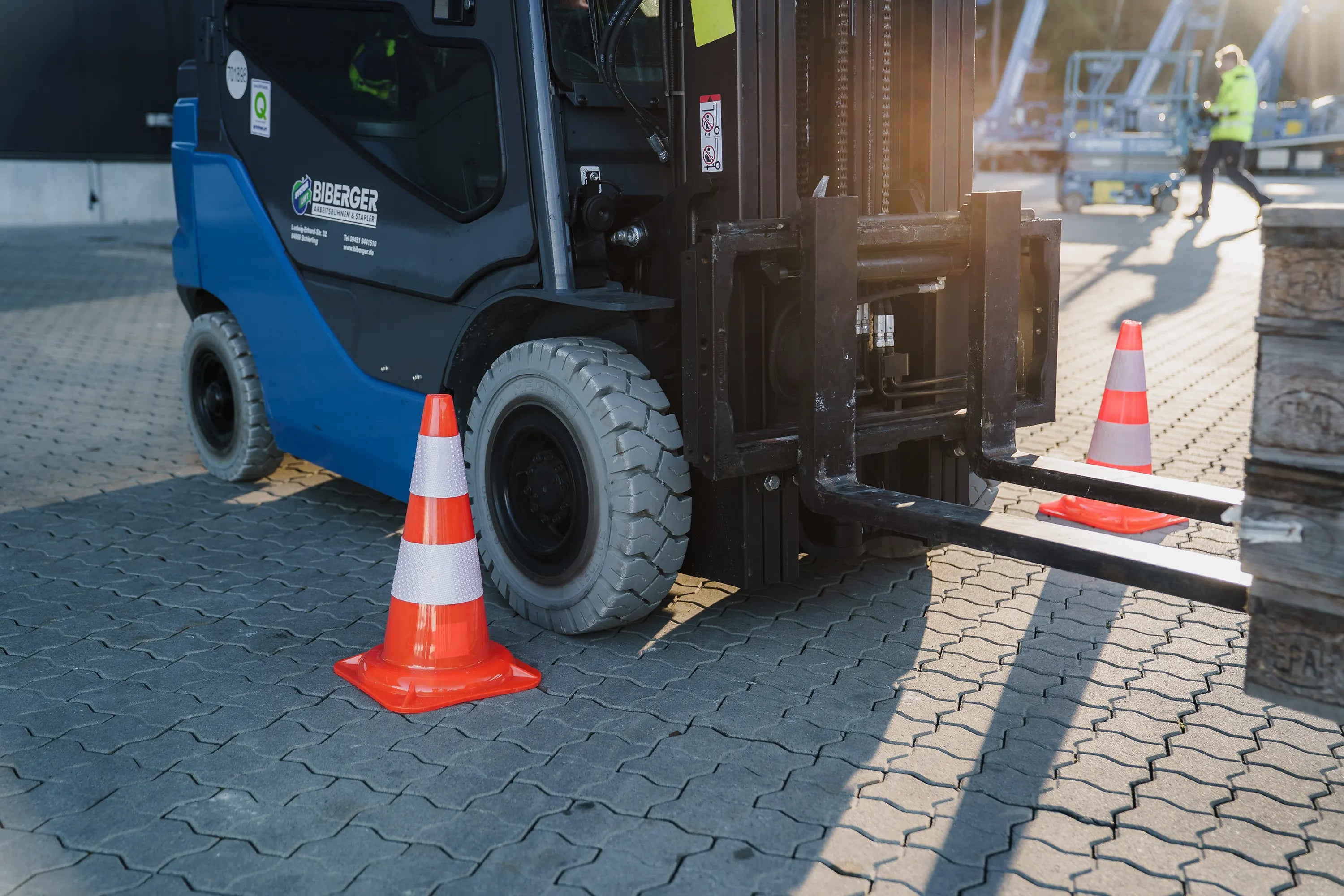
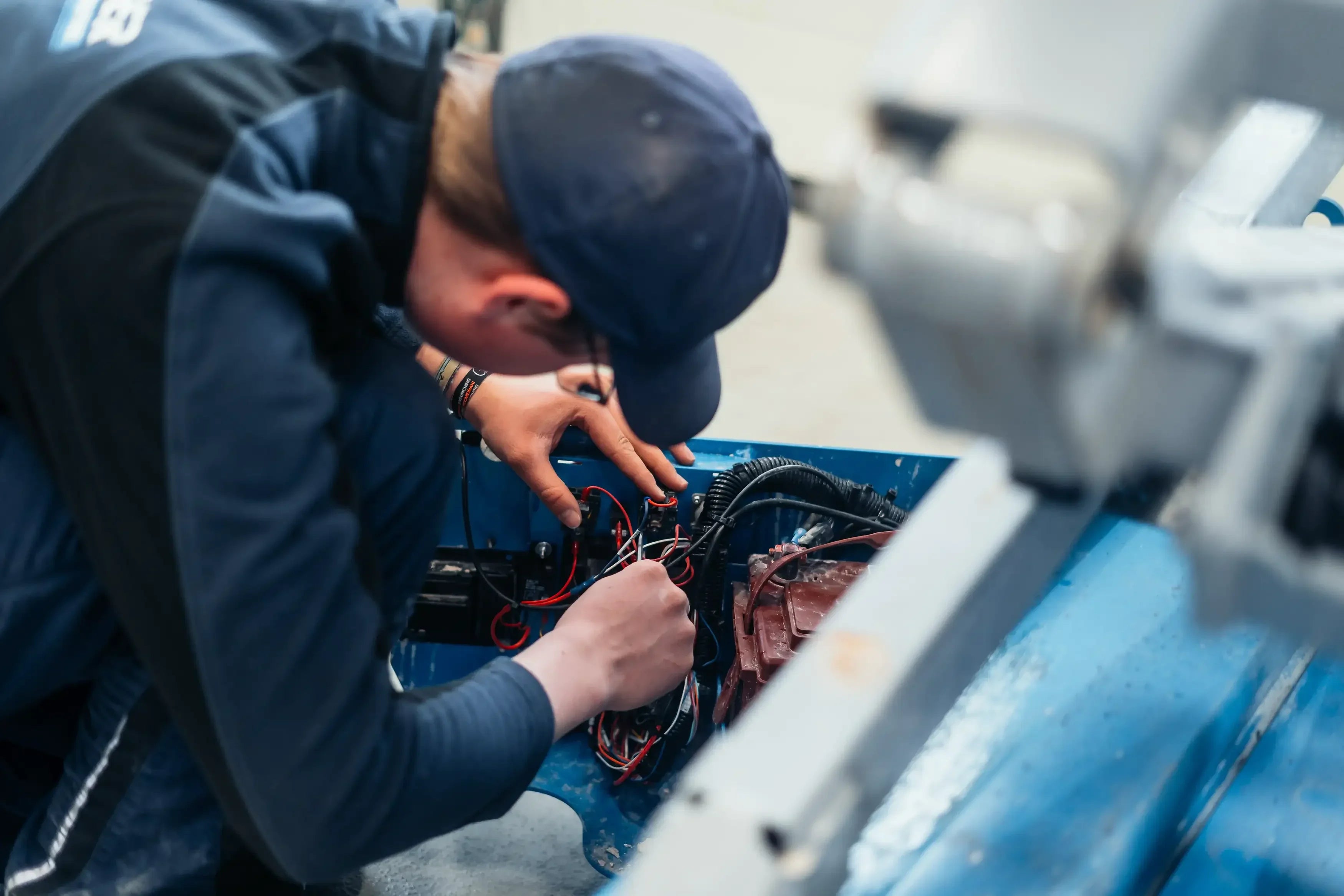
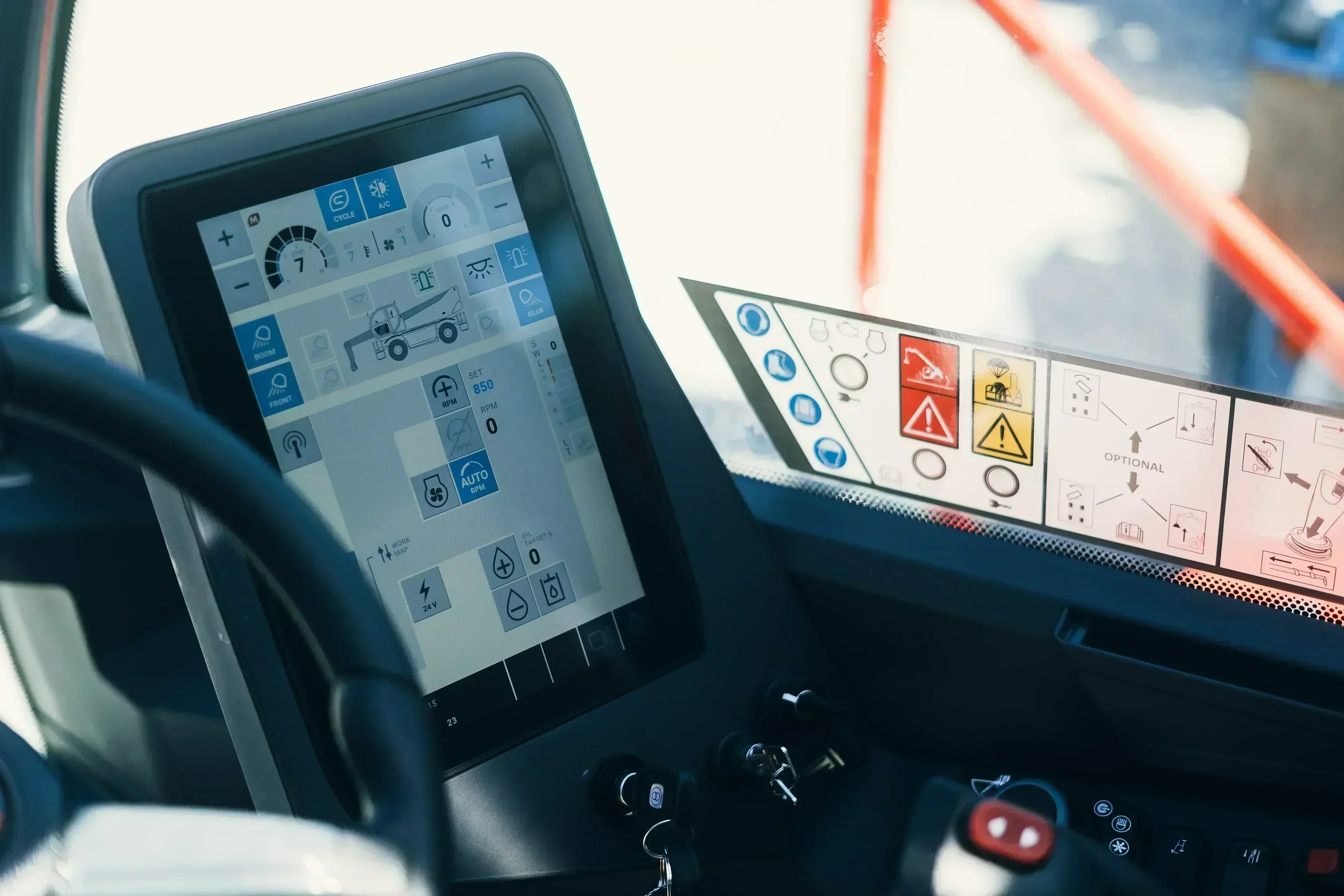






Share:
Understanding and Using Load Diagrams: A Practical Guide
Two new Billennium B 1890 EVO QUICK-PRO in the rental park
Our editorial quality standards
The subject content on biberger.de are editorially created, reviewed, and continuously updated. The basis is our daily work with aerial platforms, telehandlers, and industrial trucks – in rental, sales, operational planning, and technical support.
Each article draws on real-world experience and is editorially reviewed for clarity, accuracy, and practical relevance according to expert criteria. Technical statements are regularly compared against current industry standards and best practices.
The aim of our publications is to make reliable specialist knowledge accessible and to offer guidance to users, decision-makers and industry partners. BIBERGER sees itself as an independent information platform for safe, economical and modern height access technology – well-founded, comprehensible and free from advertising influence.